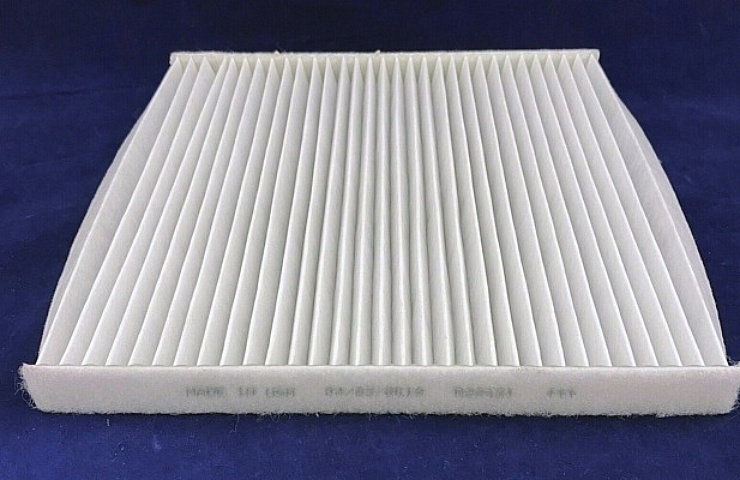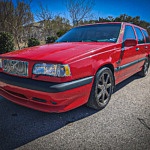Contents
If you had service on your car recently, your mechanic probably offered to replace the cabin air filter. Sounds like a good idea, right? Who doesn’t want clean air in the cabin?
Unfortunately, many shops will charge $100 or more for a new filter that you can quickly replace on your own—and for just a few dollars.
Maintaining healthy air inside the car also requires a cabin air sensor. These sensors help regulate the temperature and air-intake controls. The well-being and comfort of passengers depends on both a clean air filter and a cabin sensor that’s in good working order.
Shop now for cabin air filters
Cabin Air Quality in Cars
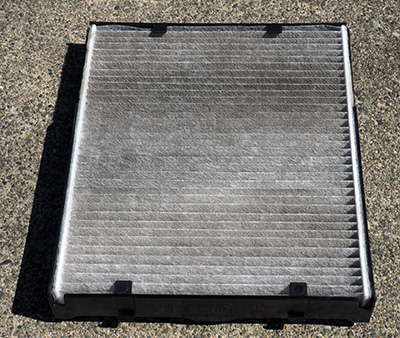
If your filter looks like this, it’s time for a replacement.
A cabin air filter is like the filter used in your home’s air conditioning or heating system. It traps dirt, pollen, and other particulates circulating through the cabin. A car’s cabin air filter is commonly the size of a large book—about eight by seven inches, with a depth of approximately one inch.
The body of the filter consists of fibers usually made of paper. It’s designed to trap gunk and particle floating in the air. The media is usually pleated to create more surface area to trap the dirt and debris.
Also see: Why Does My Car Smell Like Eggs, Crayons or Other Odd Things?
Cabin filters became common in vehicles about 2000, when automatic temperature settings were put in nearly every car. The automatic setting is helpful for maintaining the desired temperature, but it means that AC and heating recirculate the air for longer periods.
As a result, dirt and pollen can collect in the system. Air filters prevent that problem while giving passengers cleaner air to breathe.
Replacing the Cabin Air Filter
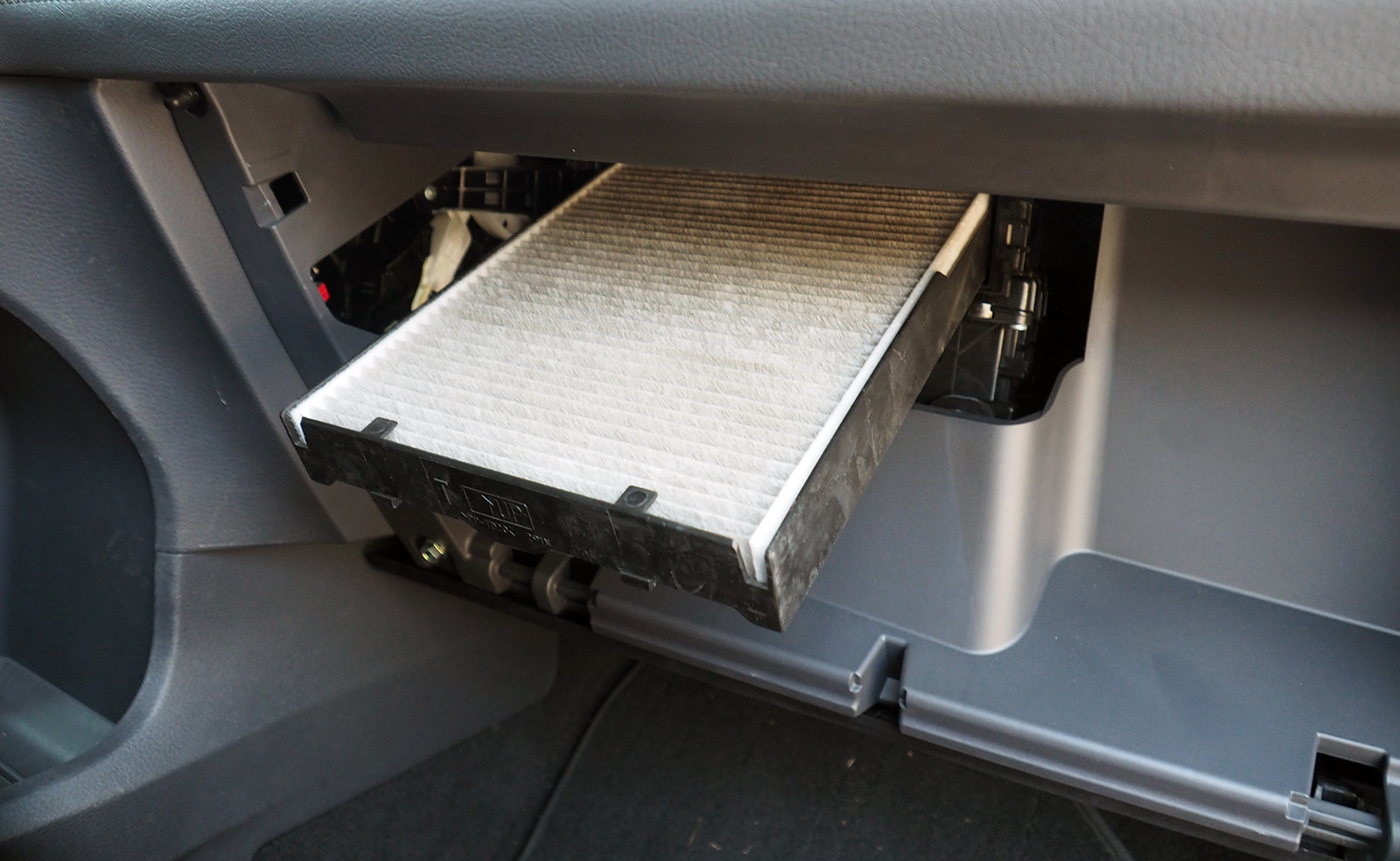
It’s easy to access and replace the cabin air filter.
Most cabin air filters can be replaced in about five minutes. They are commonly located behind the glove box. The owner’s manual or service manual should have step-by-step directions. Or check out a YouTube video for your specific car or truck. Here’s a good overview on YouTube:
Follow These Steps
Here are the steps for replacing a cabin air filter in a 2021 Toyota Sienna. The job in your car will be similar, although some steps might be slightly different.
- Remove the contents of the glove box.
- There is usually a damper (or gas strut) on the side that allows the glove box to gently drop down. Disconnect this damper.
- With the damper removed, the glove box will drop down. There is usually a latch on both sides of the glove box. Push (or squeeze) the latches and the glove box to grant access to the cabin air filter.
- Remove the cover by unclipping it.
- Pull out the tray and support for the cabin air filter. At this stage, you should be able to easily lift out the filter.
- Hold the filter up against a bright light or the sun. Is it noticeably dirty? Is the light barely coming through? If yes to either of these questions, it’s time to replace the filter.
- Put the new filter in the tray and reverse the previous steps.
Bonus points: Write down the date when you replace the filter on the edge of the filter frame. That will create a handy record of when it was installed—and will help you anticipate the need to replace it again. Check your owner’s manual for recommendations for how often you should replace the filter.
eBay has a full supply of cabin air filters from a wide range of brands. Standard filters use fibrous media to trap pollutants in the air. If your frequently drive in areas with noxious fumes, you might try a more expensive carbon-based cabin filter. Providers of “activated carbon” filters tout their ability to trap odors and remove volatile organic compounds (VOCs) from the cabin.
Typically carbon filters cost just a few dollars more, and some consumers say they notice the difference. However, the improvement in the cabin air from a carbon filter depends on the quality of the outside air in your area.
Air Quality Sensors 101
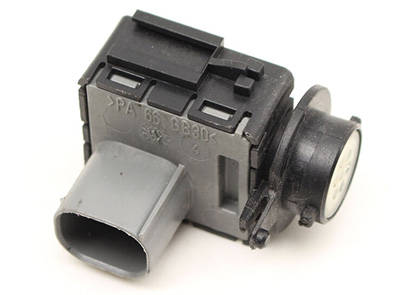
Air quality sensors monitor the air inside the car.
A car’s air quality sensor (AQS) measures the air entering the vehicle and circulating inside. Let’s assume that you have your AC set to recirculate air. That means the same air inside the vehicle keeps getting cooled and returned back into the car. That is a great way to cool the cabin. But the air quality sensor will detect if a car full of passengers raises the carbon dioxide levels too high. If so, the sensor will force fresh air inside the cabin.
Here’s another example. If you drive through an industrial area with higher levels of pollutants, the AQS can shut off the outside air intake until the air quality is better.
Sensors come with different designs to measure these pollutants:
- Carbon monoxide
- Carbon dioxide
- Hydrocarbons
- Particulates
Everybody loves “new car” smell, right? Well, keep in mind that the smell is mainly due to chemicals gassing off from plastics, glues, rubber pieces, and other volatile organic compounds. The air quality sensor can detect if the levels get too high and send outside fresh air into the cabin.
These electronic sensors can be replaced if they fail. But the replacement might be best left to a qualified mechanic. If you’re ever in doubt about the air quality, a handheld air quality tester can provide detailed numbers for a wide range of pollutants. Depending on the tester, you can detect carbon monoxide and carbon dioxides, along with other fumes and particulates. However, with a new air filter and a functioning air quality sensor, you and your passengers can rest assured that the cabin air is safe and clean.

